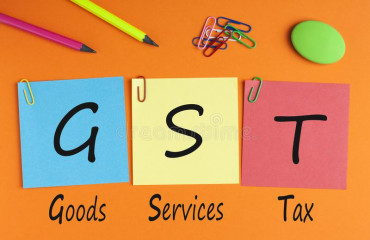
The Goods and Services Tax (GST) implementation in India aimed to simplify the indirect tax system, create a unified market, and eliminate cascading tax effects. However, questions arise regarding its impact on income equality and living standards. This article delves into whether GST has fulfilled its objective of reducing inequality, analyzes tax collection improvements, and examines official data.
The Goods and Services Tax (GST) implementation in India aimed to simplify the indirect tax system, create a unified market, and eliminate cascading tax effects. However, questions arise regarding its impact on income equality and living standards. This article delves into whether GST has fulfilled its objective of reducing inequality, analyzes tax collection improvements, and examines official data.
The primary objective of GST was not specifically aimed at eliminating income inequality but rather to streamline the tax structure and establish a common national market.
As per the response, the objective of GST did not include directly addressing income inequality. Therefore, evaluating its fulfillment in this regard is not applicable.
An internal study conducted by the Department of Revenue highlighted significant improvements in tax collection post-GST implementation. From 2018-23, the gross overall GST revenues exhibited a buoyancy of 1.25, surpassing the nominal GDP growth rate. States' SGST revenues also witnessed buoyancy, contributing to significant revenue gains. Comparatively, the pre-GST period showed lower tax buoyancy, indicating lesser revenue growth.
While the GST implementation aimed to simplify taxation and foster economic growth, its direct impact on income inequality remains debatable. The focus on tax collection improvements underscores its effectiveness in generating revenue for both the central and state governments. However, further studies and policy interventions may be necessary to address income disparity effectively.
***
GOVERNMENT OF INDIA
MINISTRY OF FINANCE
DEPARTMENT OF REVENUE
LOK SABHA UNSTARRED QUESTION NO. +358
TO BE ANSWERED ON MONDAY, FEBRUARY 05, 2024 / MAGHA 16, 1945 (Saka)
Elimination of Inequality in Income and Living of Citizens by Implementation of GST
†358. SHRI VIVEK NARAYAN SHEJWALKAR:
Will the Minister of FINANCE be pleased to state:
(a) whether the objective behind the implementation of GST system was to eliminate inequality in income and the living standards of citizens in various regions;
(b) if so, whether the said objective has been fulfilled;
(c) if so, the details thereof and the extent to which progress has been made in this regard;
(d) whether tax collection in the States has improved as expected in comparison to earlier; and
(e) if so, the details thereof with the supporting official data?
ANSWER
THE MINISTER OF STATE IN MINISTRY OF FINANCE
(SHRI PANKAJ CHAUDHARY)
(a): No Sir. The objective of the Goods and Services Tax (GST) is to harmonise and simplify the indirect tax regime of the country, remove cascading effect of taxes and provide for a common national market for goods and services.
(b) & (c): Does not arise in view of reply to (a) above.
(d) & (e): An internal study was conducted by the Department of Revenue in May 2023, the details of which was published on May 24, 2023 in a leading business daily in an article titled "GST has been a game-changer". Gist of the study is as follows:
(i) The average growth rate of gross overall GST revenues (States plus Centre) for the period 2018-19 to 2022-23 is 12.3 per cent as compared to average nominal GDP growth rate of 9.8 per cent, implying a tax buoyancy of 1.25. In comparison, for the five-year period of 2012-17 (pre-GST period), the buoyancy of taxes which were subsumed in GST (States plus Centre) was only 0.9988.
(ii) During 2018-23, States' SGST revenues (including compensation released to States) witnessed a buoyancy of 1.22. This totals to revenues of ₹37.7 trillion to the States in this period and include post-settlement revenues of over ₹29.2 trillion and compensation of ₹8.5 trillion released during this post-GST five-year period. Even without compensation, State GST revenues have witnessed a buoyancy of 1.15. In comparison, revenue of States from the taxes subsumed in GST witnessed a growth rate of a mere 8.3 per cent in the pre-GST four-year period 2012-16. The GDP growth during said period was 11.5 per cent, signifying a buoyancy of 0.72, way less than 1.
